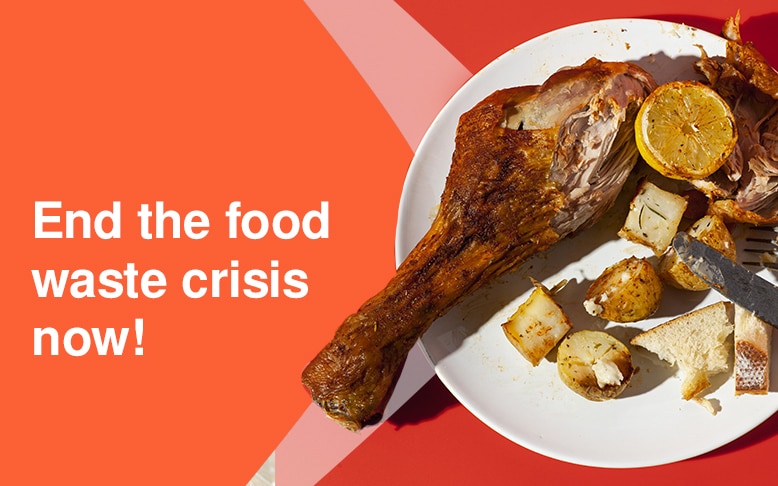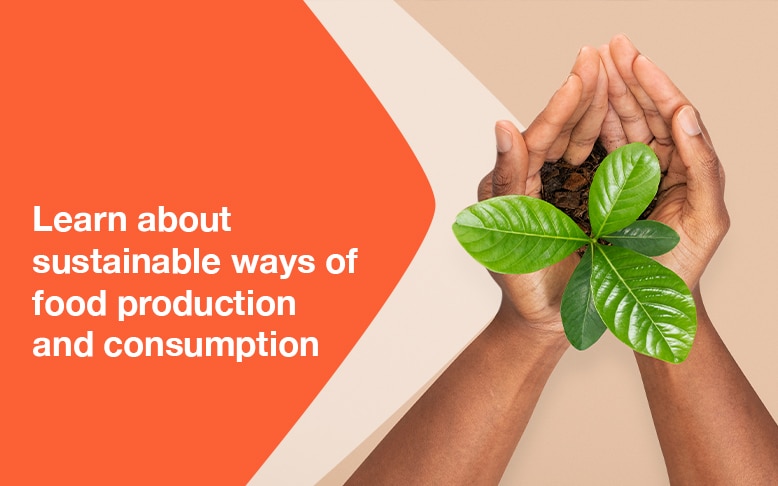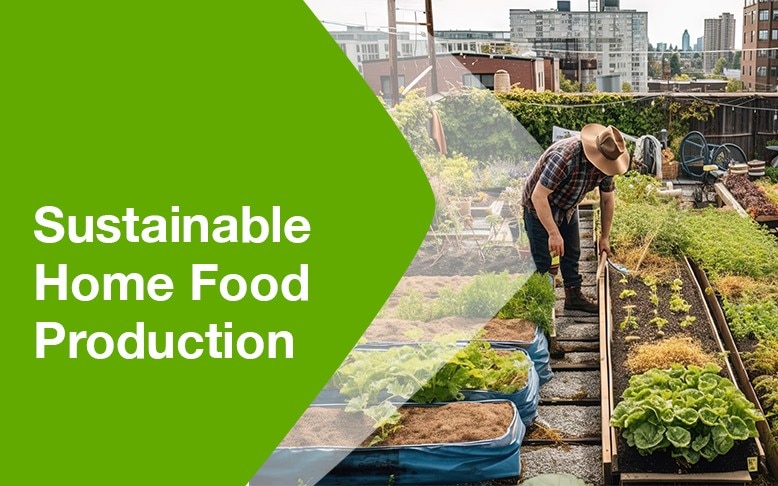Introduction
An enormous amount of food goes to waste while millions around the globe suffer from malnutrition and hunger. Globally, around one-third of food produced for human consumption is lost or wasted, amounting to approximately 1.3 billion tons per year.1 Meanwhile, as of 2017, a staggering 821 million people worldwide were undernourished and Asia comprised 63% or almost two-thirds of the world’s population facing hunger.2 In 2023, more than 345 million people are estimated to experience high levels of food insecurity, according to the World Food Programme.3
As nutritionists and dietitians, we hold a crucial role in addressing this pressing issue. In order to understand the scale of this problem and develop appropriate, targeted solutions, we first need to understand their definition and causes. So what are food waste and food loss?
Food Loss vs. Food Waste
Food waste and food loss both refer to the loss of edible food at various stages of the food supply chain from production to actual consumption.4,5 These two terms are covered under the Food and Agriculture Organization’s definition of food wastage, which is implicitly defined as “the decrease in the quantity or quality of food.”5 Hence, these two terms are often used interchangeably.
Food losses and waste impact our economic resources, environmental conditions, and food security,2,3 which are factors that directly affect the nutrition status of the community. The distinct difference between the two terms is the mode of how the decrease in quality and quantity of food happens.
Causes of Food Losses and Waste
Food loss and food waste occur in different stages of the food supply chain.
Food loss may happen during production, harvesting, processing, manufacturing, distribution, and transportation. This may be brought about by inefficient farming practices, poor post-harvest handling, and crop diseases during production and harvesting. Fruits and vegetables are particularly susceptible to food loss during these stages due to their perishability, fragility, inconsistent sizes and shapes that may require trimming for standardization, and even aesthetic requirements that may lead to rejection to meet the market standards. Additionally, during transportation and distribution stages, inadequate infrastructure, lack of temperature control, mishandling, delays, and improper storage conditions may lead to spoilage, damage, or contamination of food products, again resulting in food loss. Moreover, prompt processing is required after harvesting fruits and vegetables to maintain freshness and nutritional value. Delays or logistical challenges in transporting the produce to processing facilities may lead to food loss.
Food waste, on the other hand, occurs at retail, foodservice and consumer level. Retailers often discard food close to its expiration date or with cosmetic imperfections, contributing to significant waste. At the consumer level, such as in restaurants, cafeterias, and households, food wastes are generated from plate waste, spoiled or expired items, or overproduction. These may happen due to overbuying, improper storage, expiration dates, or reluctance to consume leftovers.
According to the United Nations Environment Programme (UNEP), food waste accounted for 17% or 931 million tonnes of the total food available to consumers in 2019.6 Furthermore, the UNEP’s Food Waste Index Report 2021 revealed that regardless of income level, there was a significant amount of food waste in almost every country that had measured it. What’s more, the report stated that food waste occurs mostly in households.6
Food Waste and Nutrition
Food wastage can have some negative impacts on nutritional status and overall health of individuals or populations.
- Undernutrition: When food is wasted, it means there is reduced food available. Inadequate food availability may in turn result in higher prices. Thus, vulnerable populations with fewer means to purchase goods will have limited access to nutritious foods. These may result in undernutrition, negatively impacting nutritional status.
- Micronutrient deficiencies: Another effect of food waste to nutrition is micronutrient deficiencies. Micronutrient deficiencies may happen when edible parts of fruits, vegetables, or animal products are discarded. These parts may contain valuable nutrients like fiber, vitamins, and minerals. When these nutritious portions are wasted, essential nutrients will be lacking. If the food sources of an individual are often wasted and nutrients are usually reduced, it may lead to nutrient deficiencies and compromise overall nutritional status.
Food waste is not limited to unconsumed leftovers. It can also occur during storage, preparation, and cooking. Improper handling and storage of food can lead to nutrient degradation or loss. Exposure to certain conditions, such as heat, light or air, can cause the breakdown of certain vitamins. Overcooking can also lead to nutrient loss. When nutrients are lost due to these unfavorable conditions, individuals may not obtain their full nutritional potential from the foods they consume.
Food Waste, Food Security, and Climate Impact
Evidence-based research links food waste and food loss to food insecurity. Generally, with reduced food availability brought about by food loss and food waste, the food supply becomes scarcer, leading to higher prices. This can make nutritious food unaffordable for low-income communities or vulnerable populations, further contributing to food insecurity and malnutrition.
Food losses and wastes represent a waste of resources used in food production, such as water, fertilizers, pesticides, and energy. They could also mean a waste of resources used in processing, packaging, transporting and marketing food. Producing foods that end up uneaten results in unnecessary CO2 emissions and a decline in economic value of the produce.1
Food waste increases greenhouse gas emissions, water usage, and land degradation. In fact, global food wastage contributes about 8% of the total anthropogenic greenhouse gas emissions.7 These environmental impacts contribute to climate change, further threatening food security by affecting agricultural productivity and production systems.
Reducing Food Loss and Waste
Programs in preventing and reducing food losses and waste are interventions to food insecurity and malnutrition. At the household level, there are several ways to minimize food losses and waste.
Message to RNDs:
Food loss and food waste do not merely reduce food quality and availability. These two problems create a ripple effect on food security, nutritional status, economy, and the environment.
As nutritionists-dietitians, we play a pivotal role in tackling the food wastage crisis at various levels. Firstly, we have to be involved in collaborating with our government and policymakers to address these problems. Our professional organizations can push our lawmakers and directly-involved stakeholders to create policies and regulations to minimize food loss and waste. These policies must provide support through funding to educate food manufacturers, farmers, distributors, and producers to learn more about food loss. These policies must also provide technology to support food producers to optimize their products and prevent food loss during the pre-, and post-production, including distribution to the consumers. Secondly, we can provide technical assistance through our organizations when programs are to be implemented in the communities. Our research may also include these two issues so we can find better ways to prevent these. Lastly, we must actively create campaigns to educate everyone about preventing food waste. These campaigns will be part of our health promotion and nutrition programs that can be localized in every community.
Addressing food waste is addressing food security, a critical aspect directly related to tackling hunger. The Sustainable Development Goal (SDG) 2 of achieving Zero Hunger by 2030 highlights the urgency of this issue. The reduction of food wastage is also incorporated in the SDG 12 that aims to cut per capita global food waste at the retail and consumer level by 50% by 2030.8 With our expertise as RNDs, we can empower individuals and communities to adapt responsible food production and consumption practices, ultimately contributing to the eradication of hunger and malnutrition and creating a more sustainable future for all.


 Kathleen N. Cruzada , RND, LPT, MEd, MPHI
Kathleen N. Cruzada , RND, LPT, MEd, MPHI



















No comments here yet.